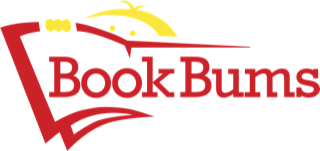Mark Seidenberg said, “Parents who deliver their children to school on that momentous first day of kindergarten, proudly starting them on the venerable path to education, make a big mistake: they assume that their child’s teacher has been taught how to teach reading.”
That sounds like an offensive statement made by one who’s criticizing some of the most dedicated professionals on the planet.
But Seidenberg also said, “I must emphasize that my concerns focus not on teachers—their integrity, commitment, motivation, abilities, effort, sincerity, or intelligence—but rather on what they are taught about child development in general and reading in particular and about the teacher’s role.”
I’d add that far too many literacy leaders fall into that same category. Too many decision-makers do not fully understand what is required to ensure that, if any, an extraordinarily low number of students will struggle to learn to read.
Far Too Many Struggling Students
APM reports that in the US, millions of kids, today, are struggling. According to the National Assessment of Educational Progress, 32 percent of fourth-graders and 24 percent of eighth-graders aren’t reading at a basic level. Fewer than 40 percent are proficient or advanced.
Here’s the rub. Teachers believe with all of their beings that they are doing what is right and good for kids. They don’t know what they don’t know, and they’re often so resolute in their stance that they often have no room for questioning if, perhaps, there just may be a better way.
In fact, proponents for the science of reading are often the ones treated as the misguided educators who are inconceivably arrogant for believing that, perhaps, there is another way–a better way–that could leave far fewer unsuccessful children who hate to read and are feeling dumb.
Educators are not the easiest lot to persuade to reconsider their convictions. They run deep.
Have you heard (or even said) the following words?
We’ve already invested so much into this program, and now you want me to change everything? And, you know how it is. Give ’em time. The pendulum always swings back the other way. I’ll just close my door, and no one will be the wiser.
I’ve heard those words. And I’ve said them.
Kids Need More Than Having Books Read to Them
But that was before I knew what I now know. And I am devoted to sharing what I know with anyone who’ll listen. Our students need us to be equipped to teach every child how to read well.
If you’ve ever sat across from parents of struggling readers, and you didn’t know what to tell them (other than Read together every night), please contact me. I’ll make sure you are receiving all the support you need as you learn a new way to equip all of your soon-to-be readers to make outstanding progress. You will see your students’ growth, this year, if you’ll commit to getting started right away.
Your First Step . . .
If you haven’t yet, read this article. It will guide you as you make your first step toward a fun-filled phonics-focused journey. You’ll have to begin doing some things you may not have done before. And you’ll have to stop doing some things you’ve always done, but you’re going to love every step. Your students will love it, too. Will it be different? Yes. Will it be exciting? Yes. Let’s get all of your students performing at grade-level expectations and beyond!
Email me at [email protected] and/or watch for daily posts devoted to getting more kids reading and spelling well.
Now, I’m going to finish devouring this book in which Seidenberg shares the what. And, across the next few months, I’m going to share the how.

